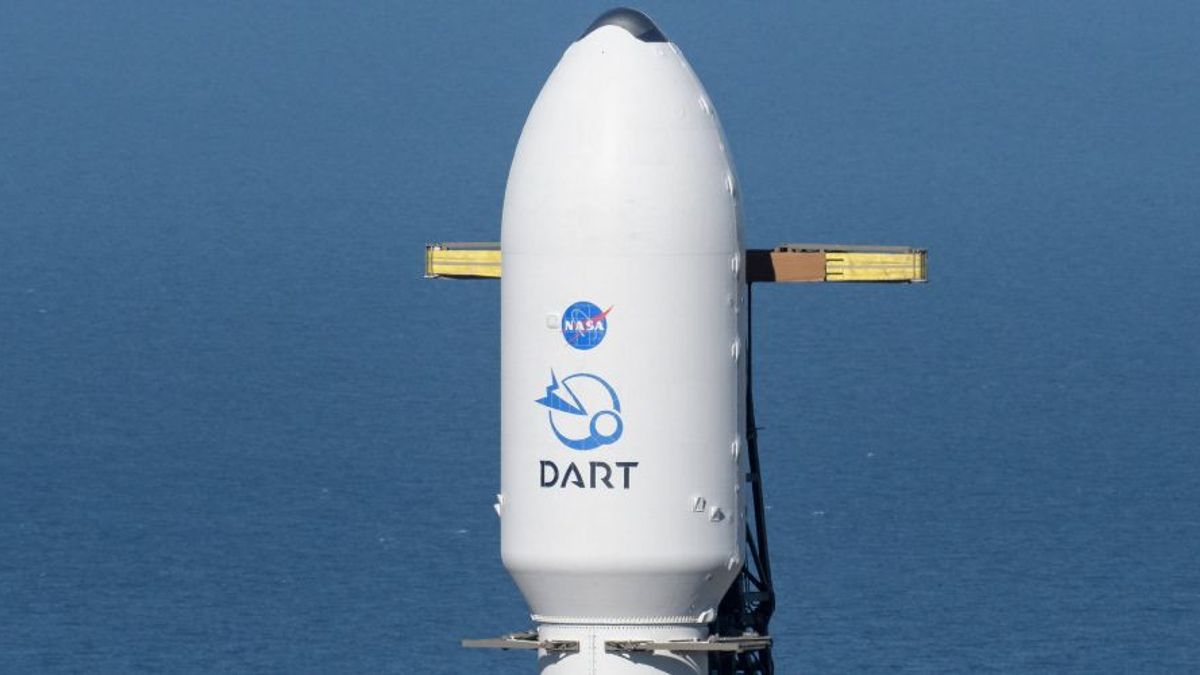JAKARTA – NASA has successfully launched its Double Asteroid Redirection Test (DART) spacecraft aboard a SpaceX Falcon 9 rocket and is now floating alone in space, ahead of a planned collision with an asteroid in less than a year from now.
DART is the first mission of its kind that will test whether hitting a rogue asteroid that is on a collision course with planet Earth will be an effective method of avoiding disaster. The astronomy community usually keeps a close eye on the paths of asteroids, especially those whose orbits bring them close to Earth during their journey.
Thanks to sophisticated observation and modeling techniques, scientists can predict with a fairly high degree of accuracy whether Earth's inhabitants should prepare for the asteroid Armageddon or not.
Take the asteroid Bennu, for example, which has a higher-than-usual chance of hitting Earth with a 0.037 percent probability in 2182. The odds are close to zero, but there's no dearth of cosmic anomalies out there, meaning if we have a strategy in place to deal with them first. , might be a good idea. That's where the DART mission comes in.
️ The warmth of sunshine on just-unrolled solar panels. Nothing like it.Our #DARTMission has unfurled its two 28-foot-long solar arrays, the last milestone in today's successful launch. https://t.co/CwG2zVCsl7 pic.twitter.com/sqkgqdbHin
— NASA (@NASA) November 24, 2021
NASA has launched the DART spacecraft as part of an experiment to test a kinetic impactor technique that aims to hit a man-made object with a space asteroid to change its trajectory if one poses a threat of impact.
After launching from Vandenberg Space Force Base in California, the spacecraft has now removed its solar panels and is now navigating in space on its own. The target is the moonlet asteroid Didymos which measures about 160 meters.
The DART spacecraft will hit it while traveling at 6.6 km/s at some point in September next year. All of that action will happen about 11 million kilometers away from Earth when scientists guide it to the big party using the DRACO (Didymos Reconnaissance & Asteroid Camera for OpNav) imaging hardware.
Now, to be clear from the start, DART targets are not a threat to Earth. In fact, according to NASA observations, no documented asteroid larger than 140 meters has a chance of colliding with Earth in the next 100 years.
As far as the collision goes, the goal is to change the moonlet's velocity by a fraction of one percent, which will create enough momentum that the moonlet's orbital period is changed by a factor of several minutes, allowing scientists to study the entire incident using ground-based telescopes.
Speaking of observations, NASA's Deep Space Network recently spotted the 1,000th Near-Earth Object (NEO), an asteroid between 65 and 100 feet in size detected using radio waves.
As for the DART spacecraft, it relies on Roll-Out Solar Arrays (ROSA) to generate power for its electric propulsion system following a blueprint similar to that used for NASA's retired Dawn spacecraft.
However, spacecraft collisions aren't the only technique scientists are testing to avoid an asteroid apocalypse. Research conducted by experts at Lawrence Livermore National Laboratory reveals that nuclear explosions near the surface of threatening celestial bodies may also be an effective method of avoiding collisions with Earth.
The English, Chinese, Japanese, Arabic, and French versions are automatically generated by the AI. So there may still be inaccuracies in translating, please always see Indonesian as our main language. (system supported by DigitalSiber.id)











